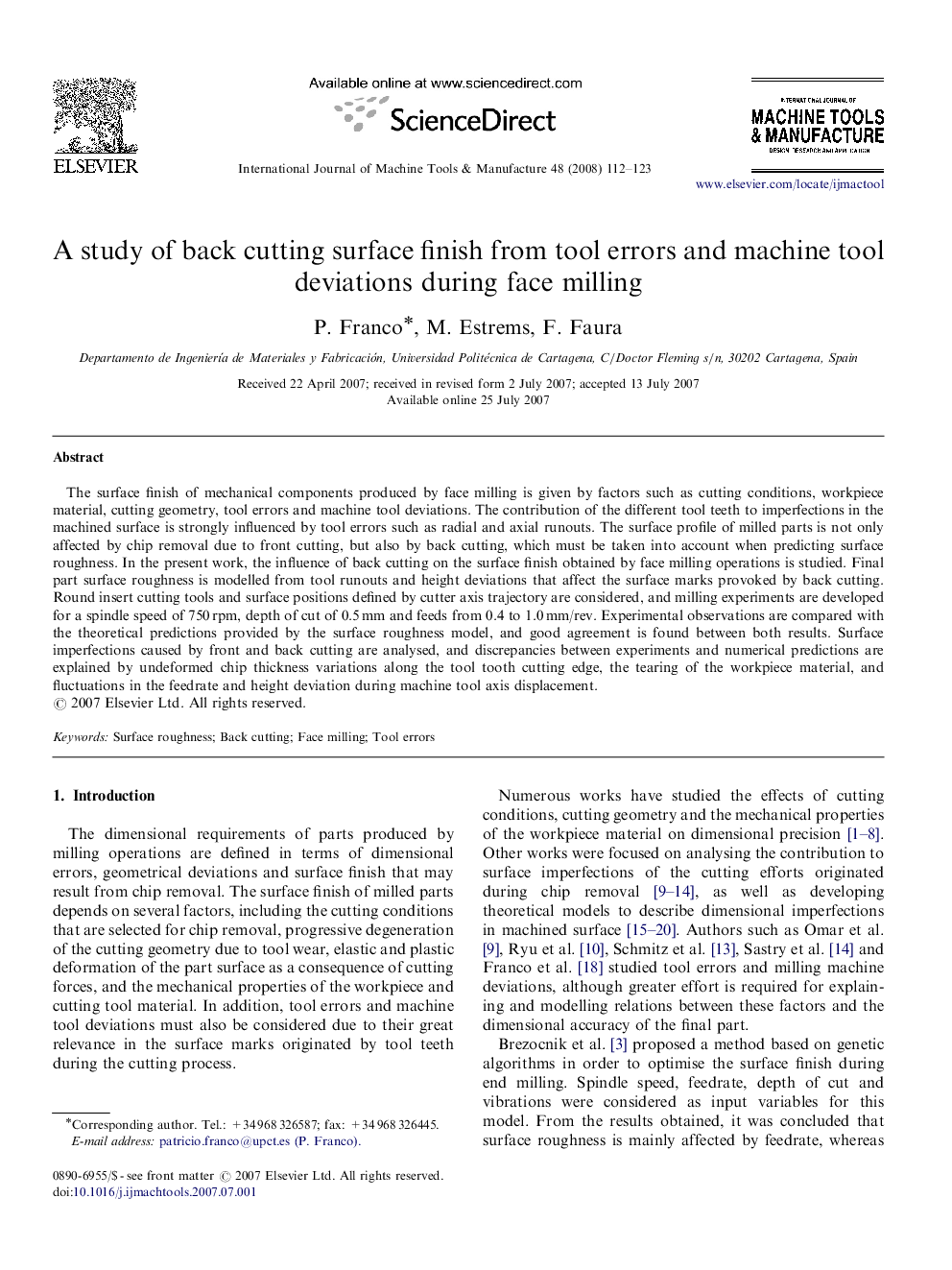| Article ID | Journal | Published Year | Pages | File Type |
|---|---|---|---|---|
| 781116 | International Journal of Machine Tools and Manufacture | 2008 | 12 Pages |
The surface finish of mechanical components produced by face milling is given by factors such as cutting conditions, workpiece material, cutting geometry, tool errors and machine tool deviations. The contribution of the different tool teeth to imperfections in the machined surface is strongly influenced by tool errors such as radial and axial runouts. The surface profile of milled parts is not only affected by chip removal due to front cutting, but also by back cutting, which must be taken into account when predicting surface roughness. In the present work, the influence of back cutting on the surface finish obtained by face milling operations is studied. Final part surface roughness is modelled from tool runouts and height deviations that affect the surface marks provoked by back cutting. Round insert cutting tools and surface positions defined by cutter axis trajectory are considered, and milling experiments are developed for a spindle speed of 750 rpm, depth of cut of 0.5 mm and feeds from 0.4 to 1.0 mm/rev. Experimental observations are compared with the theoretical predictions provided by the surface roughness model, and good agreement is found between both results. Surface imperfections caused by front and back cutting are analysed, and discrepancies between experiments and numerical predictions are explained by undeformed chip thickness variations along the tool tooth cutting edge, the tearing of the workpiece material, and fluctuations in the feedrate and height deviation during machine tool axis displacement.
